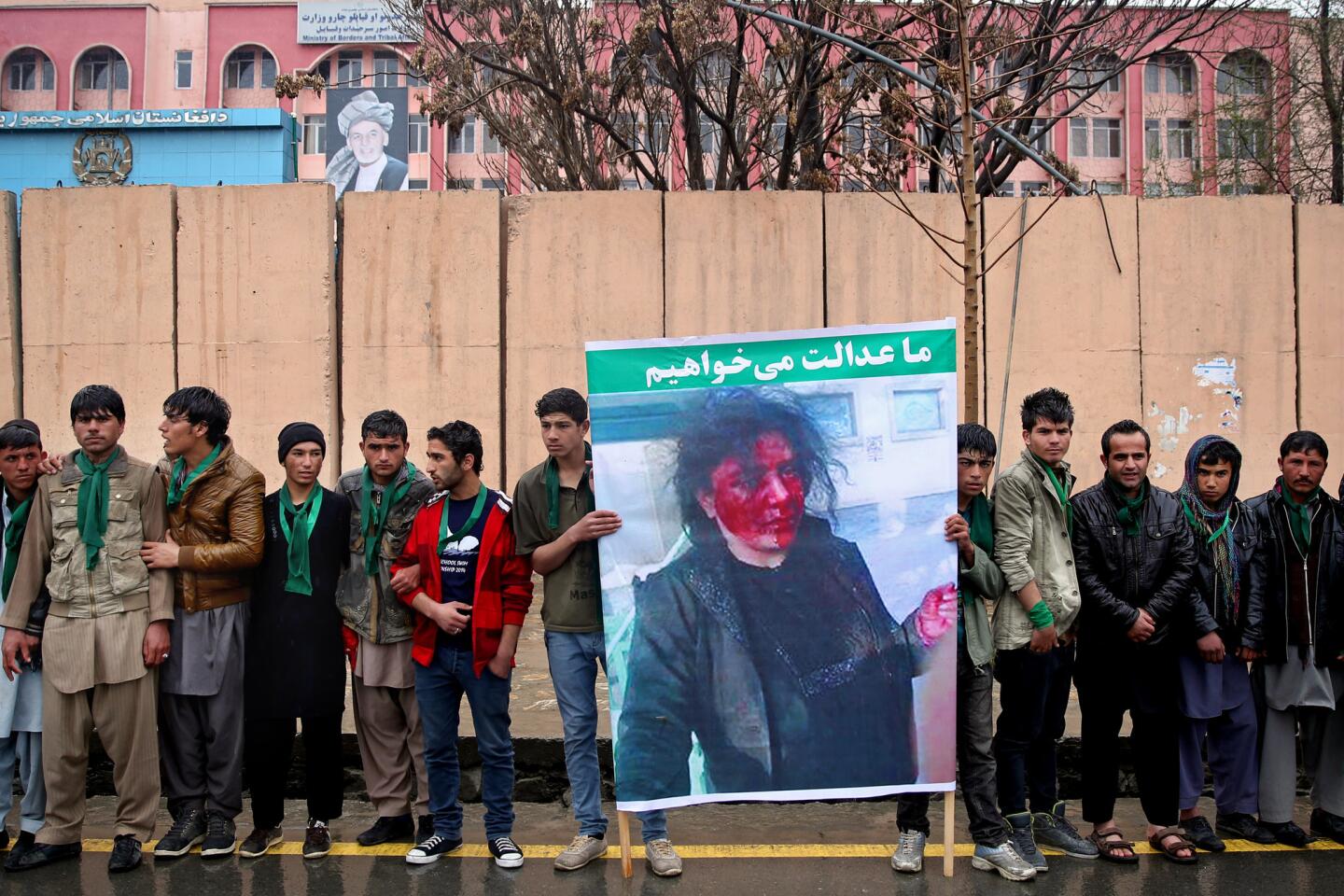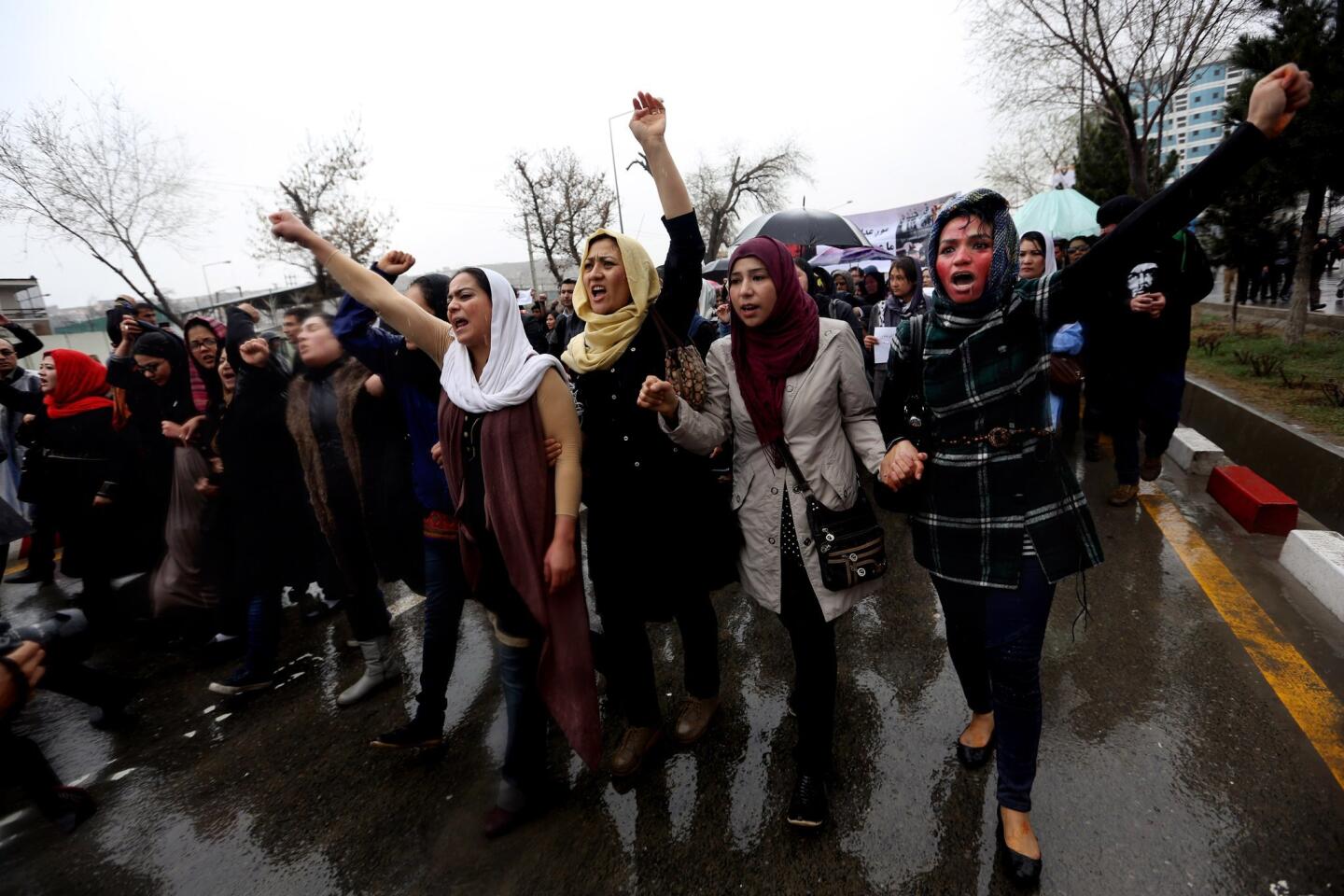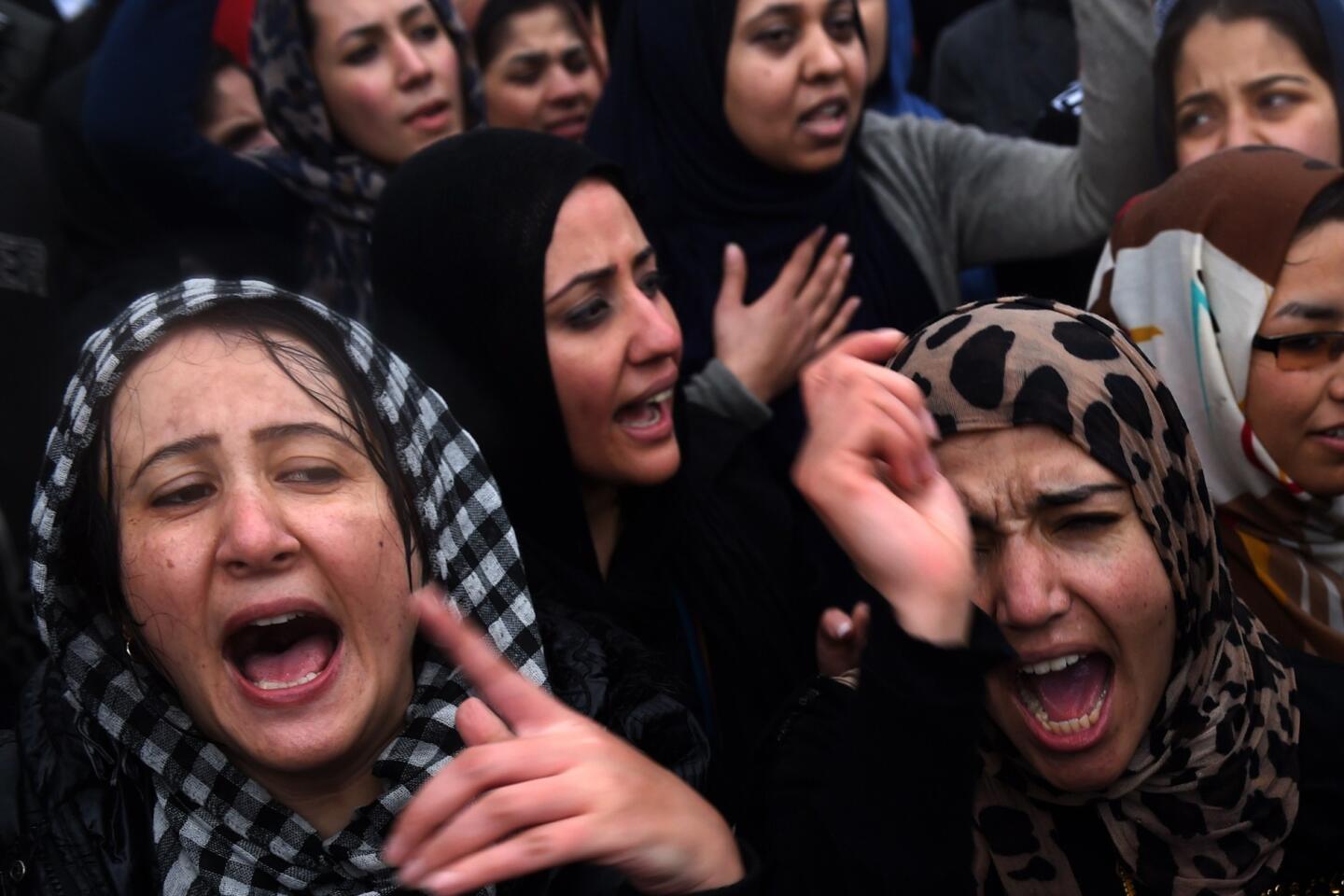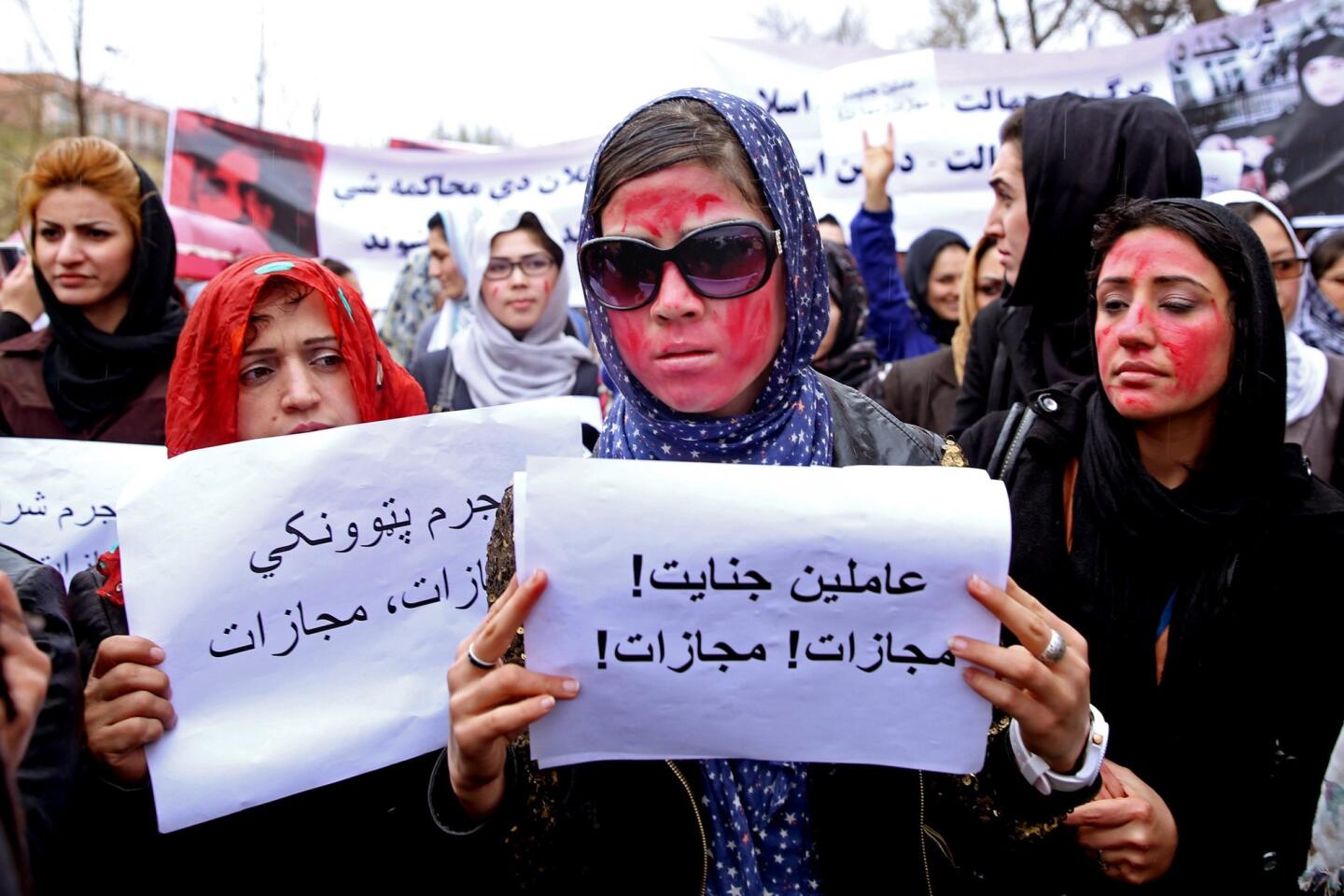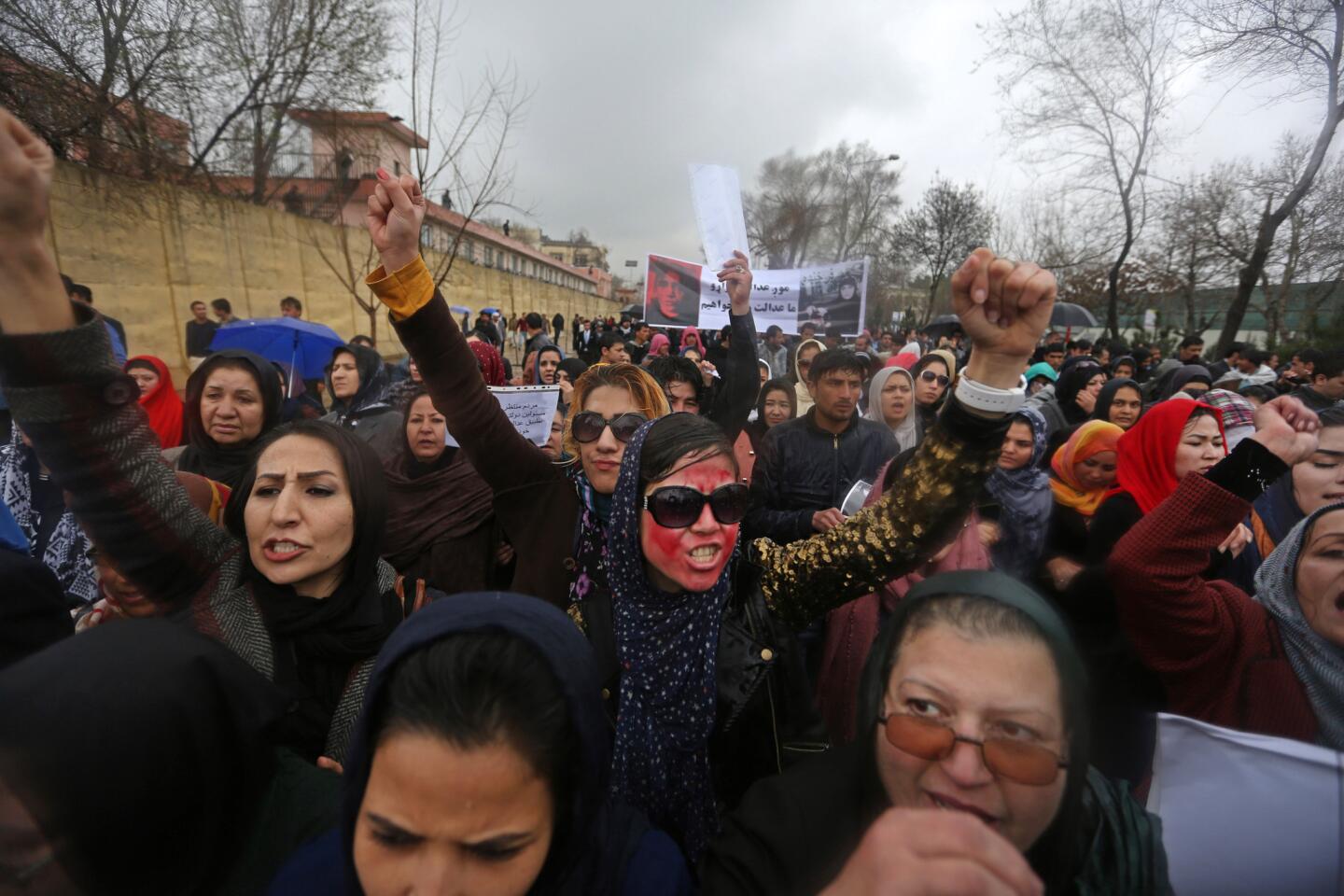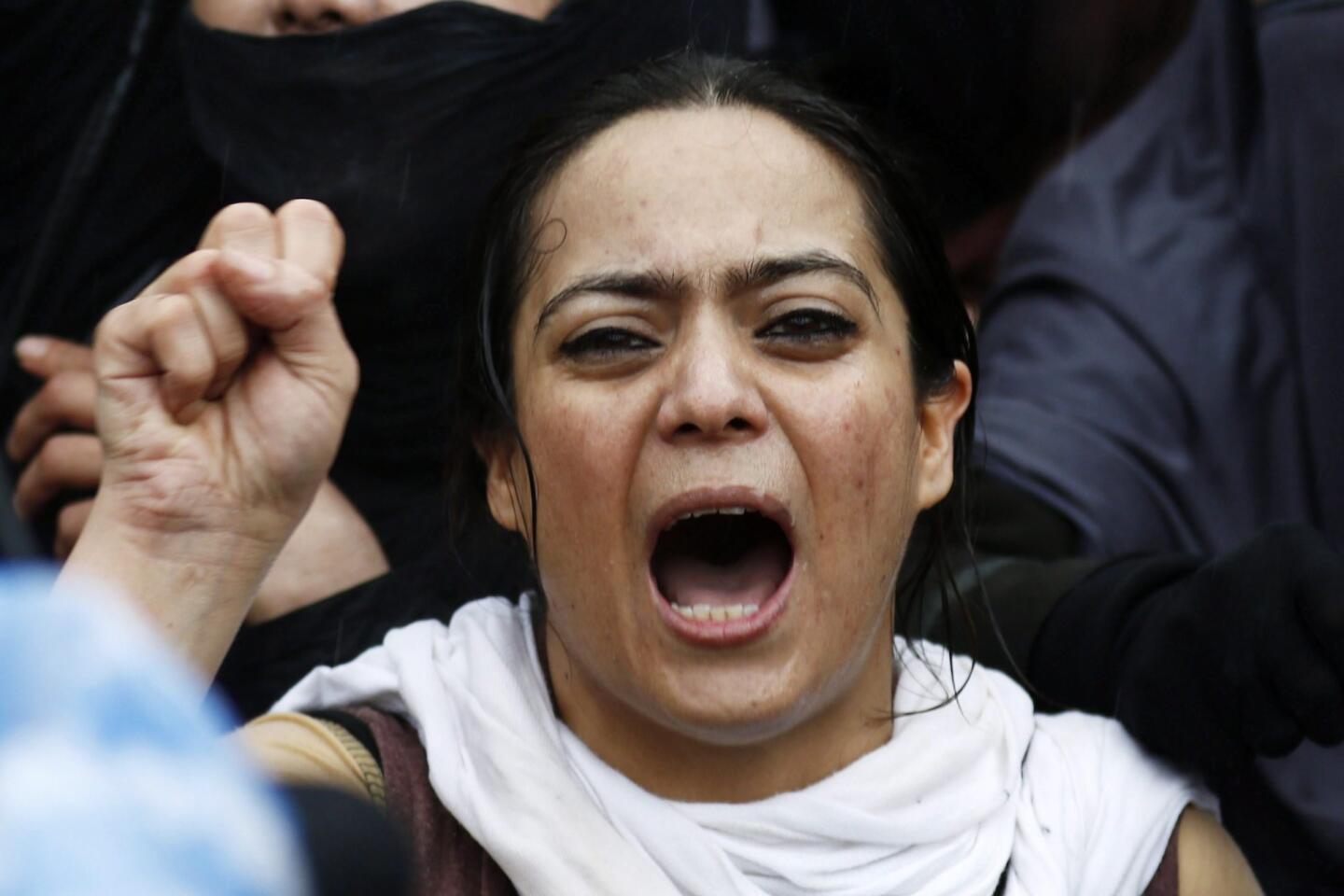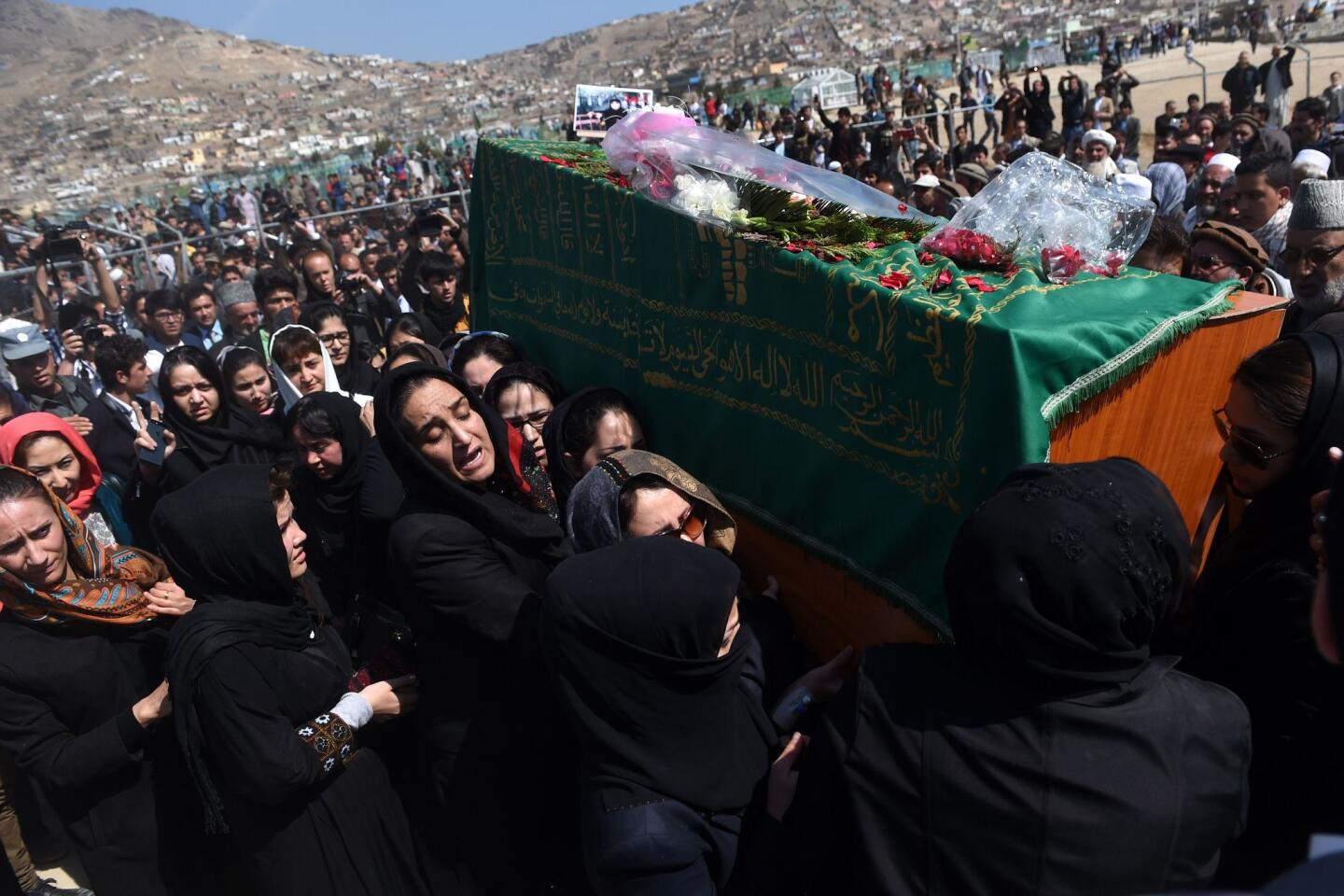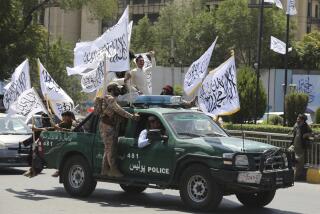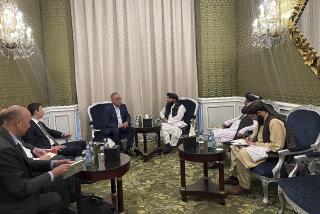Afghan marchers demand justice for woman killed by mob
Several thousand protesters shut down a major thoroughfare in Kabul on Tuesday, demanding justice for the brutal killing of a 28-year-old Afghan woman by an angry mob last week.
The demonstration was the second in as many days to demand justice for the woman identified as Farkhunda, who was beaten and burned by a mob at a Kabul shrine after being falsely accused of burning pages of the Koran, the Muslim holy book.
The crowd estimated at more than 2,000 chanted, “Islam is a religion of humanity,” and “We want justice,” as they walked toward Afghanistan’s supreme court building.
The killing Thursday afternoon gained global attention after cellphone videos showed Farkhunda being beaten, pelted with rocks and sticks and run over by a car at the Shah-Do Shamshira shrine in central Kabul.
Her lifleless body was then dragged by a car to the nearby Kabul River where she was burned in a dirt patch on the river’s edge.
Investigations by security officials and the Ministry of Hajj and Religious Affairs found that the papers Farkhunda was accused of burning were in fact Persian-language prayers and not the Arabic-language verses of the Koran as originally claimed.
Interior Minister Noorolhaq Olomi on Monday became the latest official to say that Farkhunda -- who, like many Afghans, used only one name -- was innocent of all charges.
“The accusation against her is completely invalid,” Olomi told the Afghan parliament. “Farkhunda was a religious girl, she was not involved [in burning the Koran], she was innocent.”
Fawzia Koofi, a female lawmaker who is part of a commission set up by President Ashraf Ghani to investigate the killing, said the protesters wanted to demonstrate that Afghans “demand and respect justice and humanity.”
Like Koofi, many of the women in attendance said Farkhunda’s death struck a nerve.
“I came because I could easily be the next Farkhunda,” said a demonstrator named Hakima, 27. “It made clear that in this country a woman can be killed at any time for any reason.”
She said there was no difference between those who beat and burned Farkhunda and the onlookers who captured the attack on their smartphones.
Some were particularly disturbed by a segment of the video that showed a woman inside the shrine saying she too struck Farkhunda. Other protesters said they were put off by the presence of dozens of police armed with riot shields, considering police were accused of standing by while Farkhunda was beaten and burned.
“How is it that today they are able to protect all of us here, but they could not fulfill their duties for a single girl among a crowd of angry men?” said a protester named Lina Alam.
A day earlier, protesters planted a tree at the site where Farkhunda was burned. It was later adorned with masks of the woman’s bloodied face.
That evening, an Afghan American entrepreneur, Akbar Arghandaiwal, dispatched a team of carpenters and blacksmiths to create a sign that would rename the street leading to the shrine as “Martyr Farkhunda Street.”
“We knew it was important because in this country, no matter how heinous a crime, in 10 days people forget,” Arghandaiwal said. “We wanted to do something that makes sure Farkhunda’s name became a part of the Kabul geography.”
Koofi described last week’s events as a turning point.
“We now know for certain that Afghanistan is the most dangerous place in the world for women,” the lawmaker said.
Latifi is a special correspondent.
More to Read
Sign up for Essential California
The most important California stories and recommendations in your inbox every morning.
You may occasionally receive promotional content from the Los Angeles Times.

